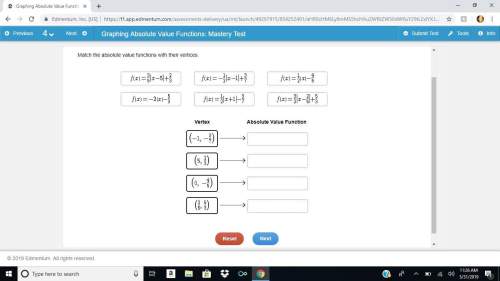
Mathematics, 02.02.2021 19:50 ayoismeisjjjjuan
I am bored and don't want to do this...
For this activity, you will need two different coins. First, you will determine the theoretical probability of events. Then, you will flip the coins 100 times and determine the experimental probability of the events.
Flip two different coins 100 times, and record the results of each coin toss in a table like the one below:
Result Frequency
Two heads
Two tails
One head, one tail
Answer the following questions based on the data you gathered. You must show your work to receive credit.
What is the theoretical probability that a coin toss results in two heads showing?
What is the experimental probability that a coin toss results in two heads showing?
What is the theoretical probability that a coin toss results in two tails showing?
What is the experimental probability that a coin toss results in two tails showing?
What is the theoretical probability that a coin toss results in one head and one tail showing?
What is the experimental probability that a coin toss results in one head and one tail showing?
Compare the theoretical probabilities to your experimental probabilities. Why might there be a difference?

Answers: 1
Another question on Mathematics

Mathematics, 21.06.2019 20:00
The length of the line segment joining the midpoints of sides ab and bc of the parallelogram abcd is 10. find the length of diagnol ac
Answers: 3

Mathematics, 21.06.2019 23:10
You just purchased two coins at a price of $670 each. because one of the coins is more collectible, you believe that its value will increase at a rate of 7.1 percent per year, while you believe the second coin will only increase at 6.5 percent per year. if you are correct, how much more will the first coin be worth in 15 years?
Answers: 2

Mathematics, 22.06.2019 01:30
Arecent study focused on the number of times men and women who live alone buy take-out dinner in a month. assume that the distributions follow the normal probability distribution and the population standard deviations are equal. the information is summarized below. statistic men women sample mean 24.85 21.33 sample standard deviation 5.54 4.93 sample size 34 36 at the 0.01 significance level, is there a difference in the mean number of times men and women order take-out dinners in a month? state the decision rule for 0.01 significance level: h0: μmen= μwomen h1: μmen ≠ μwomen. (negative amounts should be indicated by a minus sign. round your answers to 3 decimal places.) compute the value of the test statistic. (round your answer to 3 decimal places.) what is your decision regarding the null hypothesis? what is the p-value? (round your answer to 3 decimal places.)
Answers: 1

You know the right answer?
I am bored and don't want to do this...
For this activity, you will need two different coins. First...
Questions


Mathematics, 13.12.2021 09:10


English, 13.12.2021 09:10

Computers and Technology, 13.12.2021 09:10

Mathematics, 13.12.2021 09:10

Mathematics, 13.12.2021 09:10

Mathematics, 13.12.2021 09:10

Mathematics, 13.12.2021 09:10

Mathematics, 13.12.2021 09:10


Advanced Placement (AP), 13.12.2021 09:10

English, 13.12.2021 09:10




History, 13.12.2021 09:20


Biology, 13.12.2021 09:20

Mathematics, 13.12.2021 09:20




